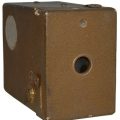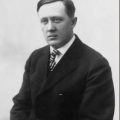A History of Ford Motor Company – How Henry Ford Started
Ford Motor Company is one of the biggest American automotive and mobility companies, it’s based in Dearborn, Michigan. It was founded by Henry Ford in 1903 and has grown to become one of the largest automakers in the world, with a global presence across six continents. The company produces cars, trucks, and a variety of other vehicles as well as provides financial services through its subsidiary Ford Motor Credit Company. It is also involved in motorsport activities such as NASCAR racing and Formula One.
How the Ford Motor Company was started
The Ford Motor Company was started in Detroit by Henry Ford, who was born in 1863 and began working on motors for the inventor Thomas Edison in 1891. Ford created a “quadricycle” in 1896, which was a four-wheeled bicycle run by a motor. He launched his second car manufacturing operation – the Ford Motor Company, which he founded in 1903.
Ford’s first project for the new company was the two-cylinder Model A, which was first sold in 1903 and could travel at a speed of 30 miles per hour at 8 horsepower. It was followed by Models B and C. In 1908 he issued the Model T, which became a huge hit. Its price was only $825 and most Americans could afford it. This made the vehicle the most-sold serial car from that time. Its glory lasted through 1927 before it was replaced by a new version of the Model A. In its early days, Ford pioneered a new type of industrial production technique known as assembly lines.
Henry Ford retired in 1919 and was replaced by his son Edsel, who employed his brothers Henry II, Benson, and William. Edsel’s vision was to bring design as well as utility to Ford vehicles. In 1922 Ford acquired the Lincoln Motor Company, a luxury car line that had gone bankrupt, originally named after President Abraham Lincoln. In the next few years, he brought more curvy shapes to the Model T, which made it an even bigger hit. He also began to issue cards in different colors besides black for the first time. Edsel modernized his cars further in the 1920s with safety glass and hydraulic brakes.
By the Great Depression, Edsel realized that the public was interested in medium-priced cars that could still be viewed by peers as impressive, so he introduced the Lincoln-Zephyr in 1935 and the Mercury in 1938. The Lincoln Continental was introduced in 1939. Ford experimented with soybeans as a material for manufacturing plastic parts and paint throughout the decade. During World War II the company acquired the Stout Metal Aircraft Company before Edsel died of cancer in 1943. Henry Ford then returned as head of the company for two years before turning control over to Henry II. The legendary founder Henry Ford died in 1947 at the age of 83.
Company profits had dipped with the late forties recession but the ’49 Ford gave the company new prosperity. It was designed for extra space, cruising, and customization for car enthusiasts, achieving both elegance and performance. Its various body styles included convertibles, coupes, station wagons, and sedans. One of Ford’s unsuccessful vehicles was the Edsel, which only lasted a few years after being introduced in 1958.
An American icon was born in 1964 when Ford introduced the Mustang at the New York World’s Fair. It was an instant success after being featured on the cover of Time and Newsweek, selling over 400,000 units in its first year. It was the ultimate sports car, designed with both V6 and V8 engines with additional options for hardtops, coupes, or convertibles. Between 1969 and 1974 the Mustang ushered in new models that included the Grande, the Mach 1, and the Mustang II. By the mid-seventies, over 3 million Mustangs had been sold. More new models arrived in 1979 and 1994.
The Ford Fiesta was launched in 1976. It became a top-selling small car in Britain and Germany through the early eighties. Ford’s European division had also developed the small family car the Escort, which was issued from 1968 through 2000. It was succeeded by Focus, which first appeared in 1998. A larger family car, the Sierra lasted from 1982 through 1993 and replaced the popular Cortina, made from 1962 through 1982.
Henry II resigned from Ford Motor Company in 1979 and for the first time, someone outside the Ford family took control of the business. William C. Ford, Jr., the great-grandson of Henry Ford, became chairman in 1999 and then CEO in 2001. Ford acquired Swedish automaker Volvo in 1999 and then sold it in 2010. Ford also acquired the sports car Jaguar in 1990 and Land Rover in 2000. Both Jaguar and Land Rover were sold to Tata Motors in 2008.
By 2005 the American automobile industry was in deep financial trouble as rising gas prices and overhead cut into Ford’s profits. Demand for bigger vehicles such as SUVs declined as Ford began dropping less fuel-efficient vehicles, moving toward more fuel-efficient vehicles such as the hybrid Escape. In late 2006 Alan Mulally became the new CEO while William Ford remained Chairman. The company refused to file bankruptcy even while the entire nation sank into recession in 2008. Ford’s new vision resulted in a return to profitability in 2009. Ford discontinued its luxury Mercury vehicles in 2010. In 2012 Ford has a market capitalization of $42 billion, a few billion more than long-time competitor General Motors.
10 Interesting Facts About Ford Motor Company
1. Ford is the second largest family-owned company in the world. Henry Ford’s great-grandson – William Clay Ford, Jr is now the executive chairman of the company.
2. Ford has produced more than 300 million cars worldwide making it one of the world’s largest automakers.
3. The first model that was ever produced by Ford was known as the Model A, and sold for $850 USD in 1903 – less than some American cars still cost today!
4. The company introduced two new models in 1908– The Model T, which sold for $825 USD, and the Model S, which retailed at $2,400 USD.
5. In 1927 Henry Ford implemented an assembly–line production system to help streamline car production leading to a dramatic decrease in costs associated with building and selling automobiles.
6. In 1959, Ford captured second place among U.S. automakers trailing behind General Motors after producing 855 thousand vehicles boosting annual sales of over 4 billion dollars!
7. In 1964, a year of major transition, Ford began producing larger cars such as thunderbirds instead of midsize models like Falcons while discontinuing its popular Edsel line.
8. Ford launched its first Mustang on April 17th, 1965, engineered from “ Falcon‘s basic architecture,” Mustang became an instant success selling over 400 thousand units within 18 months!
9. The 1970s represented another major shift for automakers, as government regulations forced dramatic changes upon gasoline-powered engines leading to downsized platforms such as Pinto or Maverick helping revive fading popularity again!
To see some amazing pictures from Ford’s history, you can visit the specially dedicated to that page on Ford’s corporate site here: https://corporate.ford.com/about/history/company-timeline.html
Hey, share some love, use some of our social buttons and help us make more great articles this way! Thanks!





